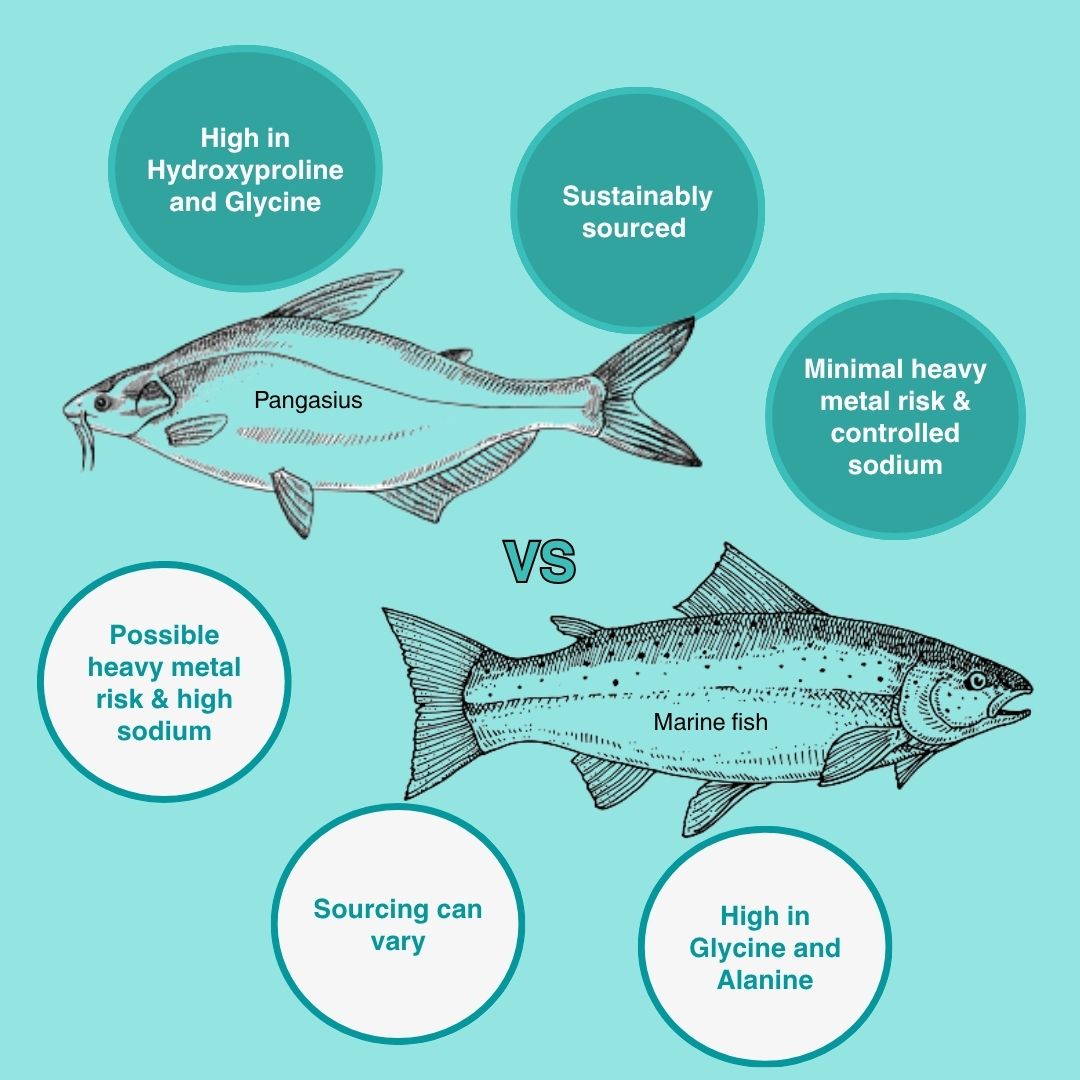Why Pangasius Stands Out
Pangasius collagen, derived from sustainably farmed warm-water fish, is gaining ground for good reason. Naturally rich in hydroxyproline and key bioactive peptides like Pro-Hyp and Gly-Pro-Hyp, it offers a unique amino acid profile compared to marine collagen. Studies suggest that these peptides play a crucial role in stimulating fibroblast activity and supporting skin and joint regeneration at cellular level (Shigemura et al., 2011).
But it’s not just about the aminos—thermal stability is another win for Pangasius. Thanks to its warm-water origin, Pangasius collagen can withstand higher processing temperature during processing, making it ideal for high-heat or ready-to-drink applications where marine collagen can fall short.
Traceability & Sustainability Matter
With marine collagen, sourcing can vary and limited traceability. Pangasius, however, is single-sourced from controlled aquaculture environments, offering full transparency and a lower environmental footprint. For brands prioritizing clean labels and responsible sourcing, that’s a major value-add.
Bottom Line?
Pangasius collagen isn’t just an alternative—it’s an upgrade. Whether you’re developing a beauty supplement, joint health blend, or functional beverage, this collagen checks the boxes: high efficacy, clean sourcing, and formulation-ready.
👉 Let’s talk collagen.
Get in touch with Vinh Wellness to learn how Pangasius collagen can power your next innovation.
Sources:
- Shigemura Y. et al., J. Agric. Food Chem., 2011
- Nagasawa T. et al., Marine Drugs, 2017


